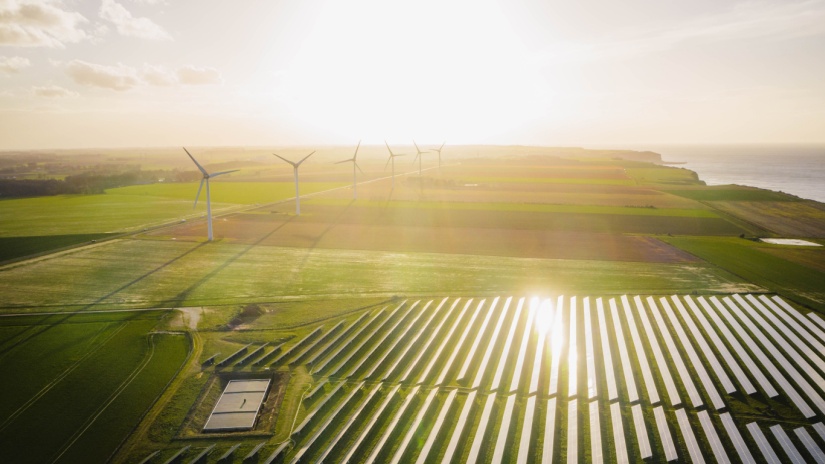Knowledge Centre
Going solar? Here’s how to test a solar panel

Solar power systems offer an eco-friendly and cost-efficient alternative to grid electricity, but they do require regular monitoring and maintenance. To keep your solar panels operating at their best, it's important to conduct periodic testing to identify and address any issues or damage.
Regularly testing and monitoring your solar system’s output is crucial for maximising its energy production. Homeowners can use monitoring apps, multimeters, and visual checks to test their solar panels without needing professional help.
Remember, a well-maintained solar system ensures maximum energy production and cost savings. For more complex issues, it's best to consult experienced solar professionals.
Many solar owners aren't sure if their rooftop solar photovoltaic (PV) system is working properly. These systems can run smoothly for years, but hidden problems can arise and cost you money.
Compare Energy takes you through how to tell if your solar panels need a test, how to do it and how to perform a solar health check.
Is testing your solar panels important?
Checking your solar panels is essential to ensure they are working at their best and generating enough energy for your home.
Regular testing can identify problems like shading, broken cells, or damaged cables. It can also reveal if your panels are underperforming due to factors like ageing, dust buildup, or low sunlight.
With accurate testing, you can decide whether to maintain, repair, or replace your solar system. If you’re not sure how to do it, you can cut a corner and ask a professional to show you what you need to do - or you can pay your installer to come and do an inspection for you.
Using a multimeter to test your solar panel
If you’re not into using apps or prefer hands-on methods, testing your solar panels directly is an option and to make this easy, you can use a multimeter.
Here’s how to test a solar panel with a multimeter:
- Set the multimeter to DC voltage mode.
- Attach the positive and negative probes to the corresponding terminals on the panel.
- Check the voltage reading. It should match your panel’s output voltage range.
A significantly lower reading could signal a connection issue or a faulty panel. Multimeters are widely available at auto retailers and hardware stores.
What if you don’t have a multimeter?
If you don’t have a multimeter but want to check your solar panel's efficiency, you can use visual indicators like a brightness test.
On a sunny day, bring a standard 12V light bulb near the panel and aim it at the surface. If the light gets brighter, your panel is likely working well. If there’s no change, even from different angles, there might be an issue with the panel's output.
Other methods to test without a multimeter include:
- Voltage test: Use a low-voltage LED to check if the panel generates electricity.
- Shadow test: Look for consistent shadow patterns to assess the panel's health.
- Visual inspection: Check for physical damage, loose connections, or signs of wear.
Do you need to call a professional?
Although you can conduct basic tests on your solar panels, it's essential to recognize when to seek help from a solar professional.
If you've detected issues like shading or damaged cables, professional intervention might be necessary.
You should also consider whether your solar panels have been subjected to prolonged shading, show no power output, or have significantly reduced output for an extended period, it’s advisable to consult an expert.
A health check for your solar panels
Given that solar panel systems can be quietly running in the background for years, it’s important to know just how to perform a health check and be sure they’re working the way they should. These steps can help you to perform a solar health check that makes a difference:
Look beyond your bills
Did you know that most homeowners only think to look at their electricity bills to tell whether their solar panels are effective or not? It’s honestly not a great idea and here’s why:
- Your bill may arrive monthly or quarterly; if your solar is underperforming, you could be losing money for a long time.
- Bills typically show how much power you exported and bought from the grid, not the total solar power generated or used at home.
- Solar power generation varies daily and seasonally due to factors like cloud cover and sunlight hours, and home power use also fluctuates. This makes it hard to compare bills and assess your solar panels' performance.
Stand back and take a look
Stand back and look at your solar panels properly. Are they clean and shiny or dull and dirty?
- If you can see dirt: Regular rain usually keeps panels clean, but dust, sap, bird droppings, or lichen can reduce their output and cause damage over time. If it hasn't rained in a while, hose them from the ground. If they're still dirty, hire a contractor with the right safety gear. Avoid using a ladder or going on the roof yourself, though.
- If your panels are in the shade: Shade is a solar system's enemy. Check if there’s more shade now than when your panels were installed. Trees, new structures, or neighbour's buildings might be casting shade, reducing power production. Most systems connect panels in a 'string' to an inverter, and shade on one panel can reduce output for all in that string.
- If you notice deterioration: Good-quality solar panels should work for at least 25 years but lose some capacity over time. Performance warranties usually guarantee at least 80% output after 25 years, but individual panels can fail faster. Safely check for signs of problems like discoloured areas, indicating damage.
Can you see the inverter light?
Many solar owners overlook their inverter, but as the most complex and hard-working part of your solar PV system, it’s often the first to fail.
Understanding the indicators on your inverter is crucial and the installer should have provided instructions during installation. If you don't have them, check your manufacturer's website.
A quick way to check your system’s health is by looking at the lights on the inverter box on a sunny day, when it should be generating power. A green light means everything is working fine. A red or orange light indicates a fault or issue.
If you see a red or orange light, check for an error code on the display. You might also access the inverter’s user interface through a web portal to identify the problem. Inverters can shut down due to grid faults, voltage issues, earthing problems, or a tripped circuit breaker.
Install a third-party monitor
Consider enhancing your PV system's performance and savings potential by investing in advanced solar monitoring solutions. Your installer should be able to tell you if they have a good product to use.
Unlike basic inverter apps, these systems provide detailed insights, alerting you to unexpected output drops via email or SMS. They use local weather data to predict panel performance, ensuring you're notified of any deviations.
Without monitoring, it's like driving a car without a dashboard. Monitoring helps you manage home energy usage, identifying high-consumption areas for efficiency upgrades or scheduling to align with solar production.
Factors that can impact your solar power output
There are so many factors that can contribute to solar power output and while you’re testing your panels, you should consider these:
- Temperature: High temperatures can reduce your system's efficiency. On a 25-degree Celsius day, your system may lose about 10% of its rated power, with greater losses in hotter conditions.
- Panel Orientation/tilt: Panels facing due north typically generate more energy over the course of a day compared to those facing east or west.
- System loss: Cabling can lose approximately 2% of power, while the inverter can lose between 3-4% during the conversion from DC to AC power.
- Clouds and haze: Reduced solar radiation due to clouds or haze can significantly decrease your system's output. Clear skies are ideal for maximum solar energy generation.
- Dirt/shading: We covered this earlier but an accumulation of dirt, bird droppings, or shading from trees or nearby structures can obstruct sunlight and reduce panel efficiency.
- Seasonal variations: Solar energy production typically peaks in summer due to longer daylight hours and higher sun angles. Production also decreases in winter when daylight hours are shorter.
- Time of day: Solar power output varies throughout the day, typically reaching its highest point around midday when the sun is at its zenith. Monitoring output during peak hours can help gauge system performance accurately.
Got more solar questions?
The best thing that you can do if you have solar-related questions is to contact the experts at Compare Energy. Our Aussie-based team can give you the lowdown on the best solar companies in your area, so give us a call on 1300 790 106.

